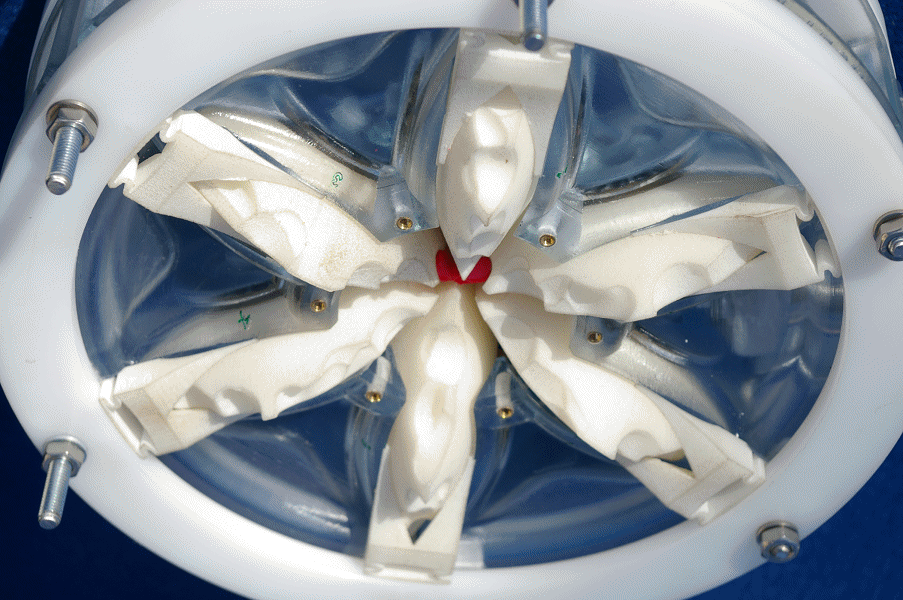Although it does make food in 3D shapes, it cannot strictly be considered a 3D printer, as it does not work via an additive process (but as a Formative process). However, the Rotruder is possible only through 3D printing since its interchangeable parts have to be 3D printed in order to make the custom food shapes.
Produced as a bespoke 3D forming machine by Crafty Machines, a subsidiary of “Ingenuous Machine Developers” Crafty Tech Ltd, the Rotruder uses 6 3D printed wheels, each with different mold cavities, which rotate in synchronisation and extrude a malleable material through their center. In this case, the wheels were designed to produce a 3D teddy bear. New wheels can be 3D printed and replaced quickly and easily. At the moment the Rotruder is designated 100 as this is the diameter size of the wheels and is available now from Crafty Machines Ltd website. Plans are in place to build a bigger and smaller versions as the market develops.
Crafty Machines Director Jan Andrejewski contacted me to update the previous version of this article which contained a few inaccuracies. He pointed out that the “ Rotruder 100 can produce snack sized foods up to a cross sectional diameter of 50 mm. The teddy bear extents, as an example, is 30 mm diameter and 46 mm in length, the volume is 11.09 cubic cm and with one teddy being produced every second and with every revolution 6 teddies are produced. The volume flow rate of material every hour would be 39,924 cubic cm.”
He explained that, with 6 such cavities on the wheel arrangement, it could be possible to create teddies each with their arms and legs in 6 different positions using a variety of different paste materials
Ice cream, chocolate, cereals, and any dough like material, like that used for the Play-Doh teddy, are the main candidates and the Rotruder could possibly offer better performances than current food 3D printing technologies. Other non-food materials are also being considered. “We can 3D form complete shapes from extrudable material using our novel, patented and the world’s first 3D Forming food processor,” Jan said. “We have been testing this device since the start of last year and at least 2 food manufacturing companies are in the process of taking new products to market by next year.”
It seemed to me that the Rotruder could be categorised as an advanced, digital, customisable “injection molding machine”, 3D printing and digital manufacturing make this technology possible. Jan pointed out that it is more of a customizable “compression” molding machine and that it is strictly a bespoke system “because some items have to be a different design depending on the material it has to deal with, say cereals & nuts as opposed to butter or ice cream.” The cost will also reflect this if wheels have to be built in SLM rather than in polyamide plastic powder SLS wheels.
From the experience I have had with food 3D pritners so far it seems to me that possible consumer adoption is still somewhat far down the line. The bespoke business models adopted by the Rotruder reflects the fact that, today, 3D food applications need a custom made, capable of catering to specific needs of chefs and food preparation experts. It will be interesting to follow it future applications and market penetration in the months and years to come.
*This article was updated on June 11th to correct some inaccuracies which described the Rotruder as a “DIY system” while it is a professional, custom system built to cater to the specific needs of chefs and food preparation experts.




